The United States of America is an amazing country which unites the most diverse ecosystems on its large territory: from mighty glaciers to dried deserts, from high mountains to deep gorges, from endless plains to impenetrable thick forests. All these can be seen on the territory of the country with an area of 9.5 million square kilometres. Smoggy million-plus cities alternate with uninhabited scenery, and national parks and nature reserves are found everywhere. There are more than 300 parks, wildlife reserves, conservation and other protected areas throughout the USA, and 14 national parks are in the UNESCO World Heritage List.
- Giant sequoia
- Sequoia National Park
- Price for a single entrance ticket
- Annual pass: price and validity
- Winter weather at the Sequoia National Park
- General Sherman
- The Sentinel Sequoia
- Kings Canyon Park
The national parks are iconic landmarks of the USA and a special focus of attention as they are home to numerous species of animals and birds. Needless to say, there are plants and trees that can be found nowhere else but in the USA. The Pacific coast with its temperate climate and fogs is a unique area where the most amazing trees on the planet grow. Perhaps you’ve already guessed right – we’re talking about sequoias. They can be seen in several parks in California, and we headed to one of them to see this miracle of nature with our own eyes.
Giant sequoia
These trees have two distinctive features: they’re the highest and the heaviest. The average height of a sequoia is 60 m, but some trees may be as high as 115 m and even more. The circumference of trunk of the widest sequoia is 31.5 m. Moreover, these giants are world record-breakers among long-livers – the oldest sequoias are now more than 3.5 thousand years old. The researchers have proved that these giant trees had existed even in the Jurassic period that is 200 to 150 million years ago.
The bark of these giants is very thick (up to 60 cm) and impregnated with substances that make the tree fire-resistant and insensitive to insect parasites such as termites or ants. The tree is also very resistant to moisture and, therefore, to decay processes. These properties make this tree a valuable building material. It was for this reason that these beautiful trees suffered from aggressive uncontrolled cutting from 1880 to 1920. There have been more than 15 species of sequoia, now only 2 species survived: a giant sequoia and evergreen sequoia. Another paradox of this tree is its root system that seems to be absolutely undeveloped in comparison with other trees. The roots don’t go deep down into soil but remain almost on the surface. This makes them very vulnerable to winds. Winds and deforestation are the worst enemies for these giant trees. Even if the wind has rooted up a sequoia tree, it can remain “alive” for a few more years and can still grow.
The name of the tree comes from the name of the Cherokee Indian chief – Sequa, who waged a war of liberation over his territory with the invaders. He also invented the Indian writing system and is considered to be the first people’s enlightener. The Indian tribes had been eventually pushed out of their lands. But the sequoia has become an eternal monument to the brave leader. Although the Americans tried to rename the tree many times, for example “Californian pine” or “mammoth tree”, the new names haven’t become widely used.
Sequoia National Park
These giants can be seen in the Sequoia National Park located in the southern part of Sierra Nevada in California. The park was founded in 1890 and is attended by more than a million tourists every year. It adjoins the Kings Canyon Park where giant sequoias also grow.
Price for a single entrance ticket
Before you can see the famous trees, you have to pay for entrance that is $30 per car. The good news is that this ticket allows you to visit two parks: Sequoia and Kings Canyon National Parks. Moreover, the entrance ticket is valid for 7 days. The authorisation to enter the parks is called “the permit” and must be kept on the dashboard of your vehicle where it is visible through the windshield. It serves as your pass.
Annual pass: price and validity
Also, you can buy a special annual pass to visit all the national parks and wildlife reserves throughout the United States. It costs $80 and is valid for a driver and all passengers in a car. It is available for purchase from a box office of any national park, or online.
We didn’t buy it ourselves as we’re going to visit a few non-national parks where this pass doesn’t work. For the list of all national parks where the annual pass works, click here.
Winter weather at the Sequoia National Park
Summer is the best time to visit the park, but if you happen to come there in winter, take time and check the condition of roads at the National Park’s website – in most cases roads may be closed due to heavy snowfalls. Moreover, almost all US National Parks are closed in winter for cars and are accessible only for hiking. Although we visited the park in early December, we were lucky – the roads were open, though we saw a thick layer of ice on asphalt. That’s why moving along narrow winding roads of the park turned into a dangerous adventure because our car was still on summer thread which was absolutely unsuitable for such weather conditions. Braking the car made it sliding on the road, so driving required maximum concentration. Special wheel chains are the best solution for such roads in winter. At entrance you’ll see a special road sign that warns you to use wheel chains. Anyway, you attend the park at your own risk and bear full responsibility for what you’re doing. Among other things, most of the roads leading to the upper parts of the park will also be closed in winter, so you’ll have to walk. That’s why it’s better to wear trekking shoes and take some food for a few hours.
General Sherman
Even at the very beginning of the park, you’ll be immediately impressed with the size of the trees, though these are not the giant sequoias. To see the giants, you need to get to the part of the park called the Giant Forest. It’s here where the world’s largest and heaviest sequoia tree General Sherman grows. Named in honour of William Tecumseh Sherman, the general of the Civil War, the tree is 84 m high and grows by 1.5 cm every year. The weight is estimated at 1900 t, the circumference of the trunk is 32 m at the very ground, the span of the crown is 32.5 m, and the maximum diameter of the trunk is 11.1 m. These figures make General Sherman the largest and heaviest tree on the planet. In 2006, the largest branch of the tree, 2 m in diameter and 30 m long, fell down. And even after this loss, the tree remained the world’s largest one.
When you stand just in front of it, the tree seems to be incredibly huge, and it is so. Although it’s strictly prohibited to come close to the tree, all visitors climb over a fence to take a picture near the well-known crack in the bark to show the true giant size of the tree.
When you look upwards at the tree trying to see its top, you have to throw your head well back, though this sequoia tree is not the highest one. Evergreen sequoia (Sequoia sempervirens) called Hyperion is the world’s tallest tree. It justifies its name one hundred percent. The tree grows in the Redwood National Park in northern California. Its dimensions are truly impressive: 115 m high (imagine a 42-story building). The US authorities keep the exact coordinates of its location in secret to prevent flows of tourists which can damage the fragile ecosystem around Hyperion.
The Sentinel Sequoia
There are more than 300 caves in the Sequoia National Park, but only one is open for tourists. Unfortunately, it is also closed in winter. Having passed almost the entire territory of the Park, we saw another giant tree of the Park’s top ten – the Sentinel Sequoia. It’s 78.5 m high and is located in the Giant Forest where the General Sherman tree grows.
Kings Canyon Park
Having walked around the Sequoia National Park, we decided to take time and visit the Kings Canyon Park, a home to many famous sequoia trees too. The number of visitors was half as much as we saw in the Sequoia National Park. But this park is really worth visiting, especially when your entrance ticket is valid for both.
The Grant Grove is the main landmark of the Kings Canyon. You can walk along paths and look at the General Grant Tree that is second to General Sherman by the wood volume. This tree was named in honour of Ulysses Grant, a general of the Civil War. The General Grant tree was originally believed to be the world’s largest one, but the measurements showed that it had to cede the leadership to the General Sherman tree. The General Grant tree is 81.5 m high. This means that you will have to try very hard to see its top.
There is also a fallen sequoia in the grove. The tree is called Fallen Monarch. Nobody knows exactly when this giant fell down, but the trunk of the tree used to serve for a variety of purposes: it served as accommodation, a hotel, a saloon and even stables for 32 horses from 1868 to 1876. Now the trunk is empty, and you can just walk inside it and feel the giant dimensions of this huge tree. You can also see many cut trees and other fallen shafts that have been lying here since the last century as a poignant reminder of irresponsible human interventions to the nature.
Having visited these national parks, I feel deep regret in my soul over these incredible giant trees which are on the verge of extinction. We would be able to see them only in pictures of history books soon. Nevertheless, US authorities do a very hard job and take all necessary measures and steps to prevent this from happening.
We haven’t visited the canyon itself because the roads were closed due to heavy snowfalls. But this will be a very good reason to come there again. Now we’re leaving hospitable California and head to another national park. Stay with us!

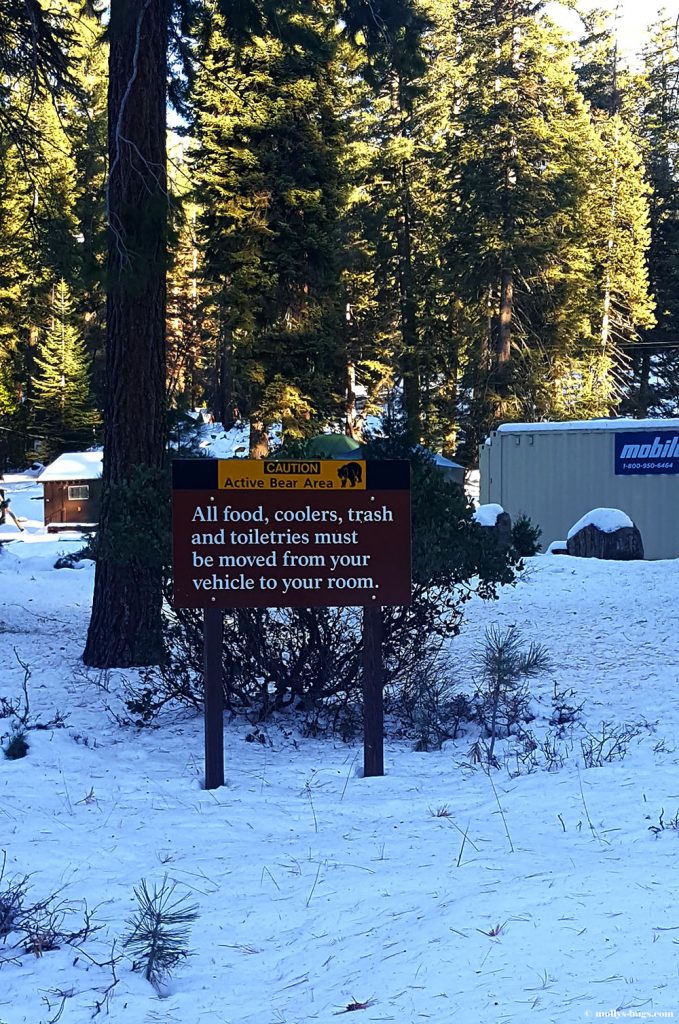
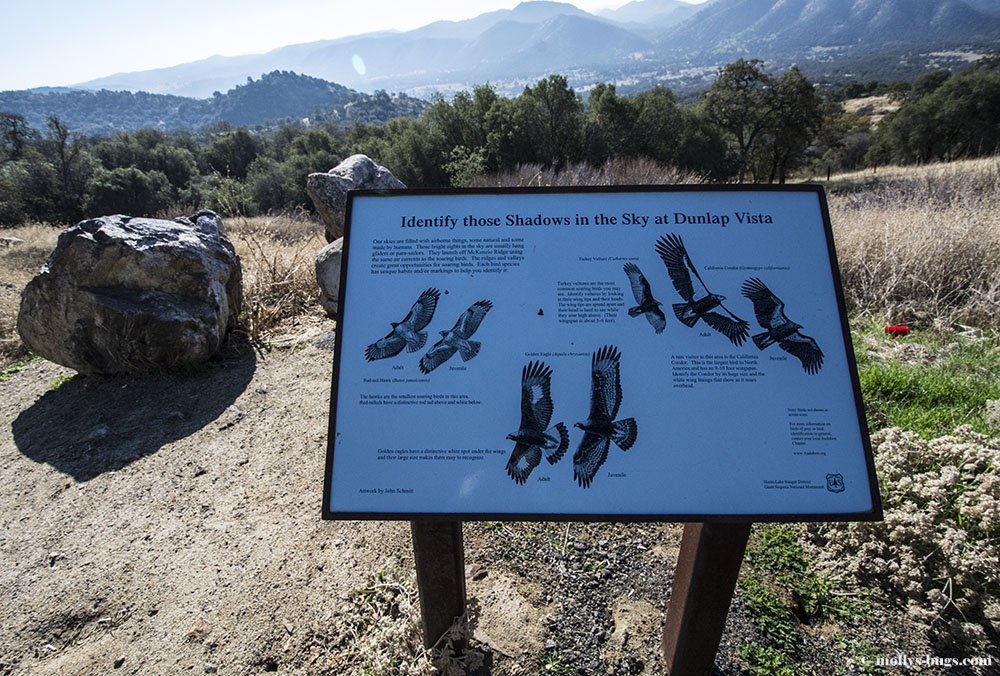
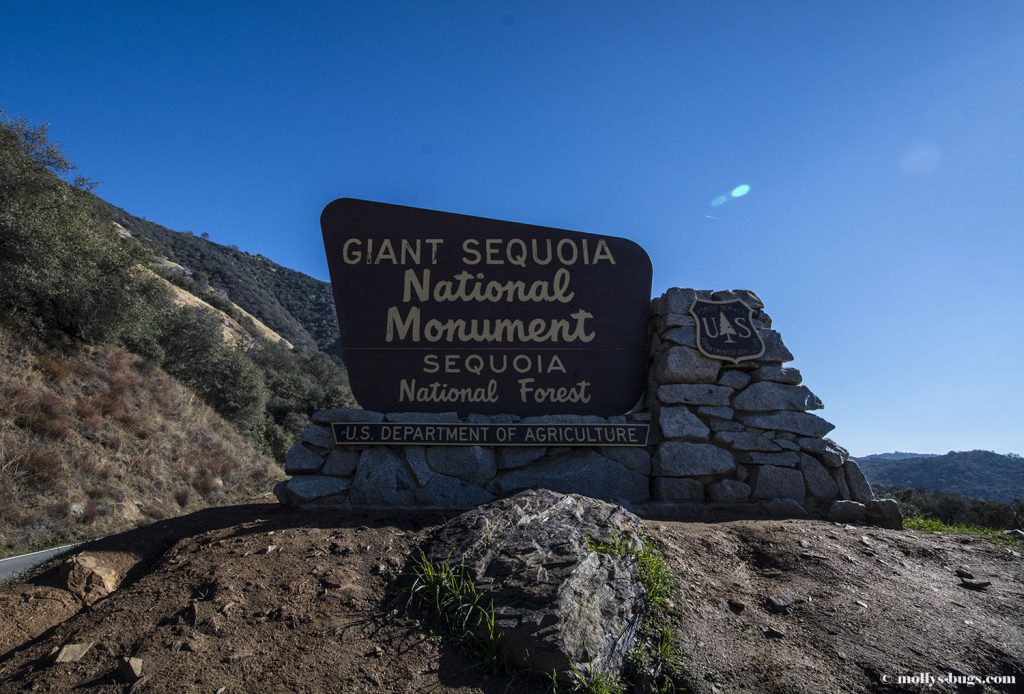
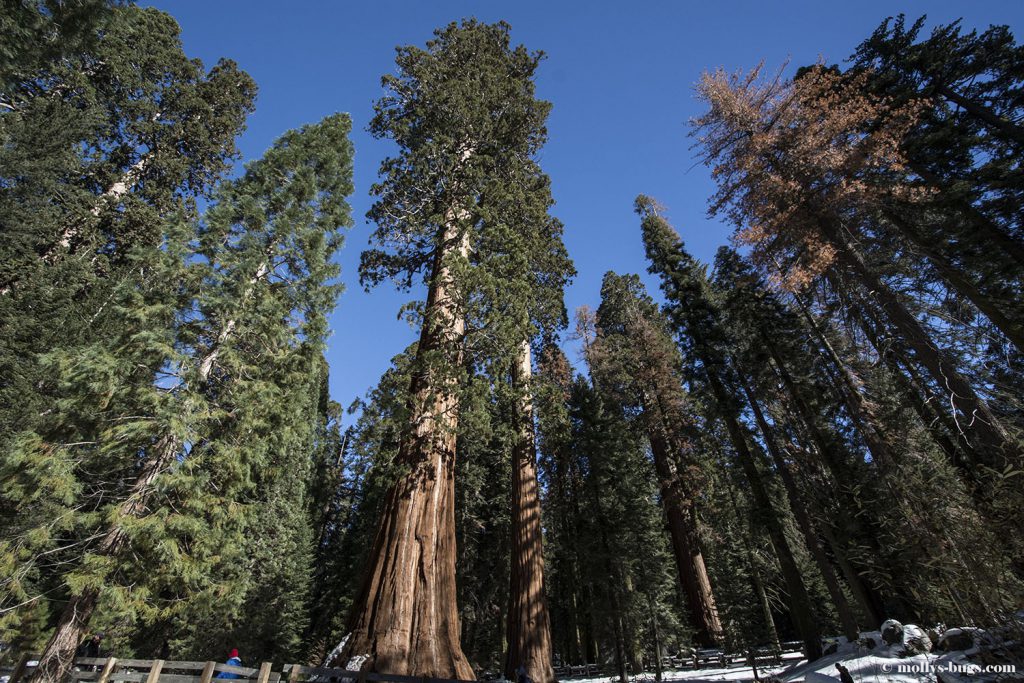
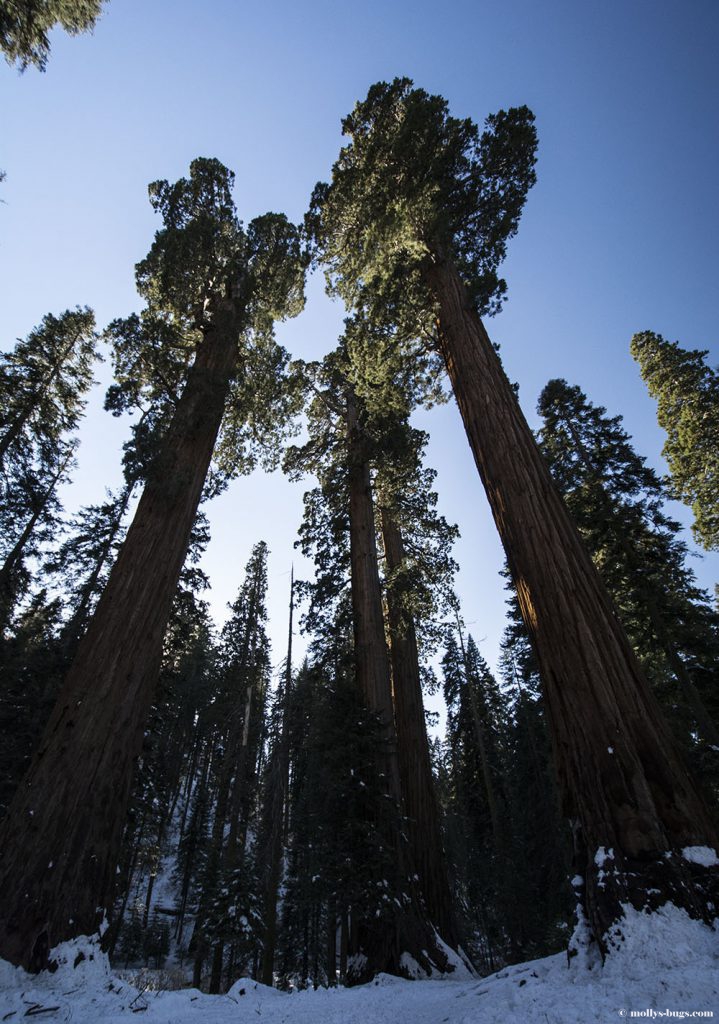
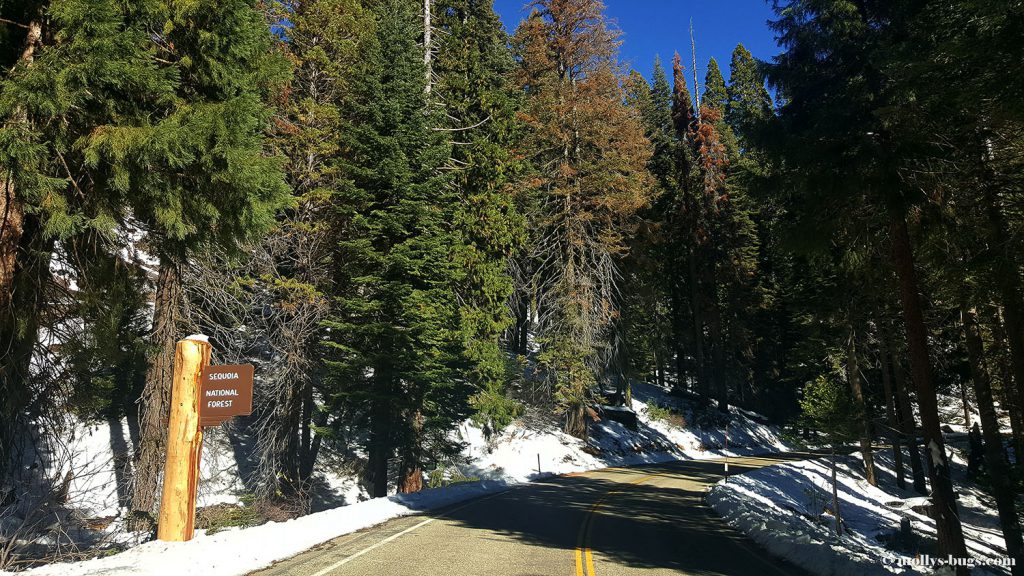
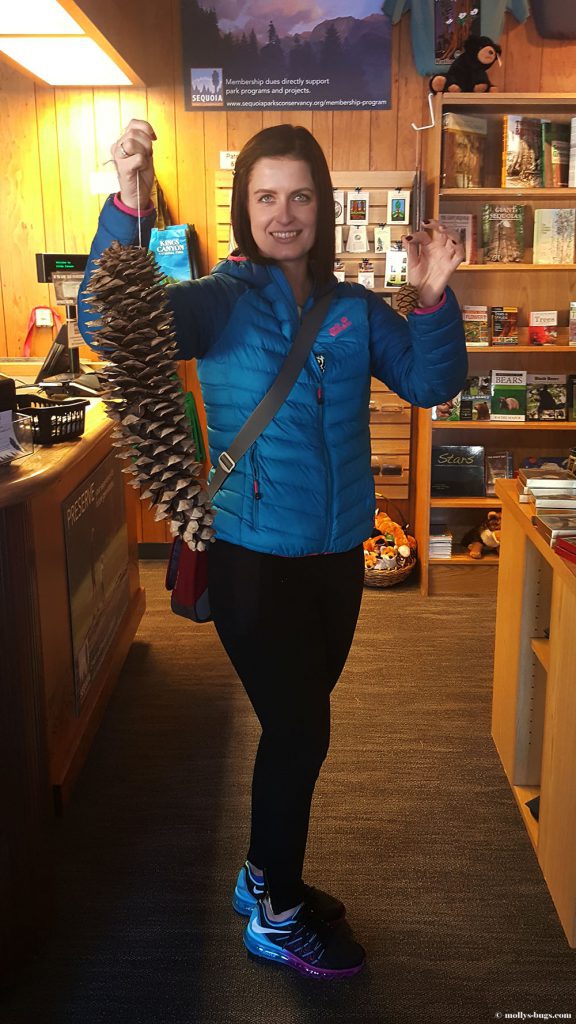
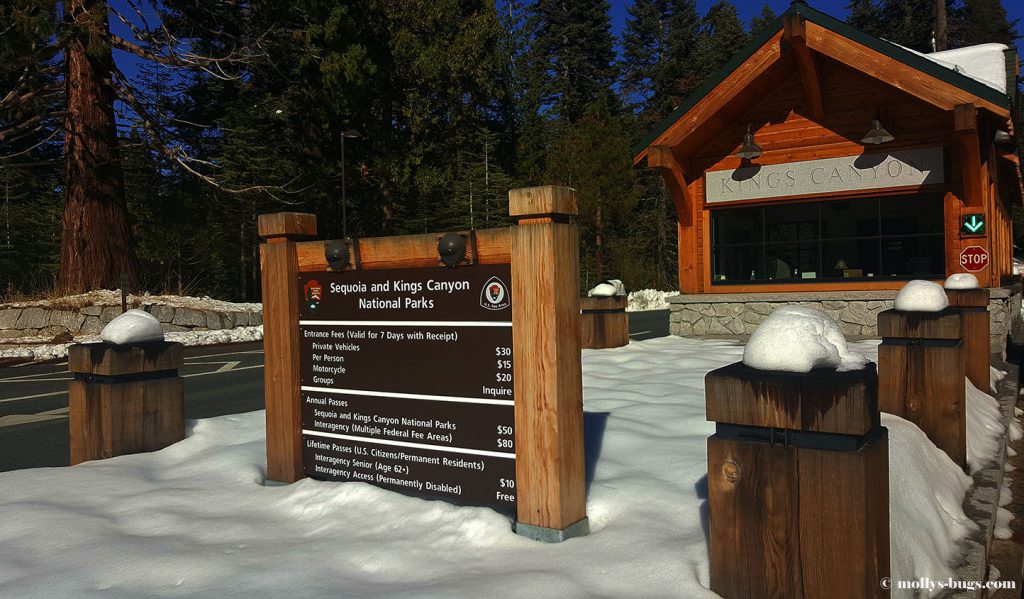
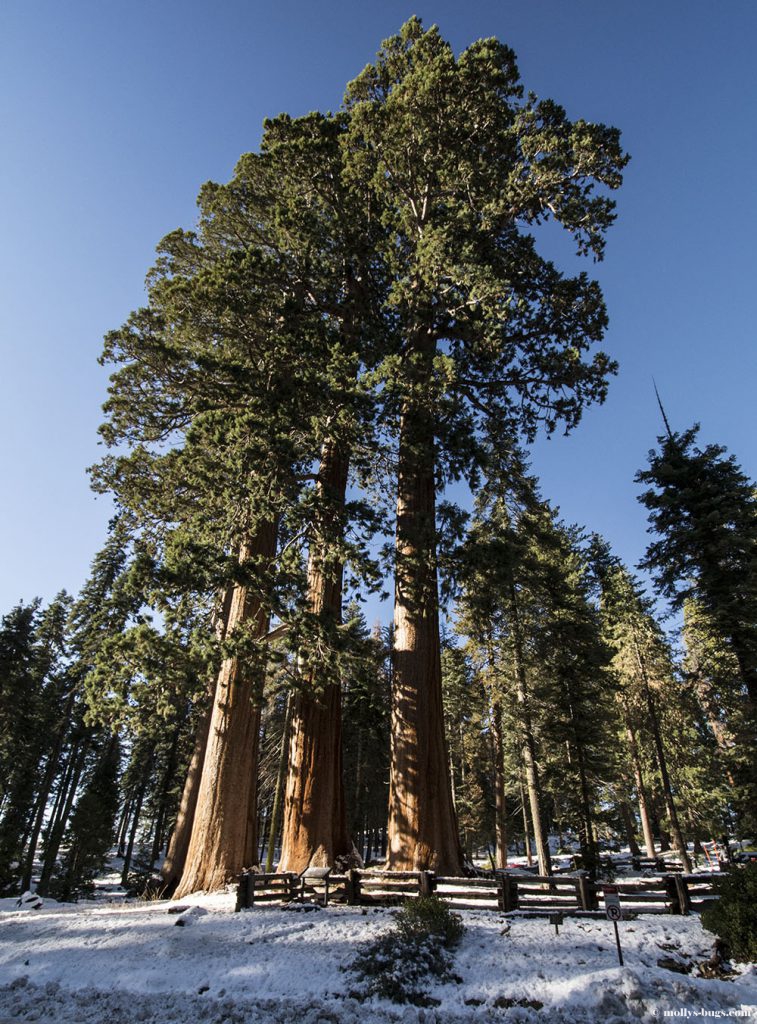
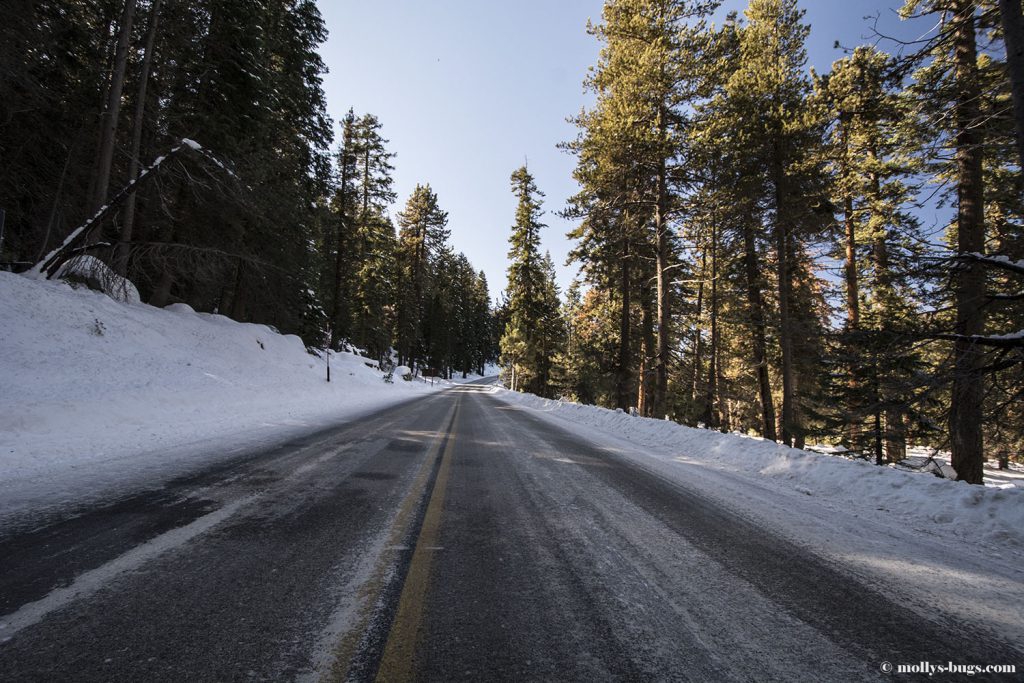
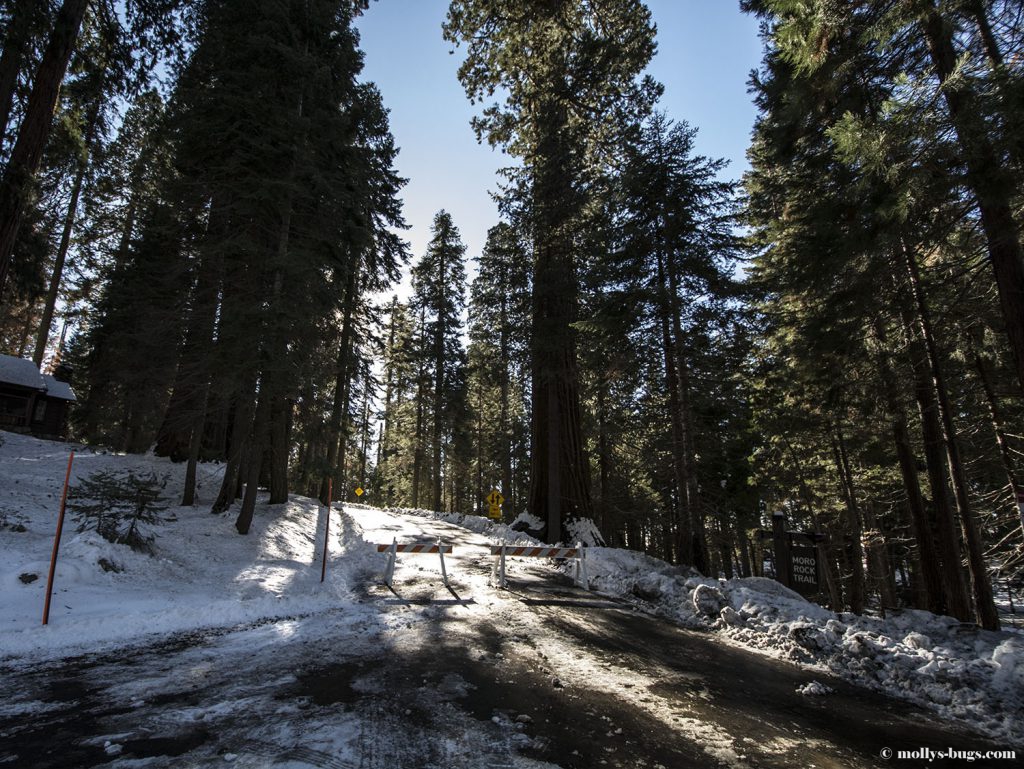
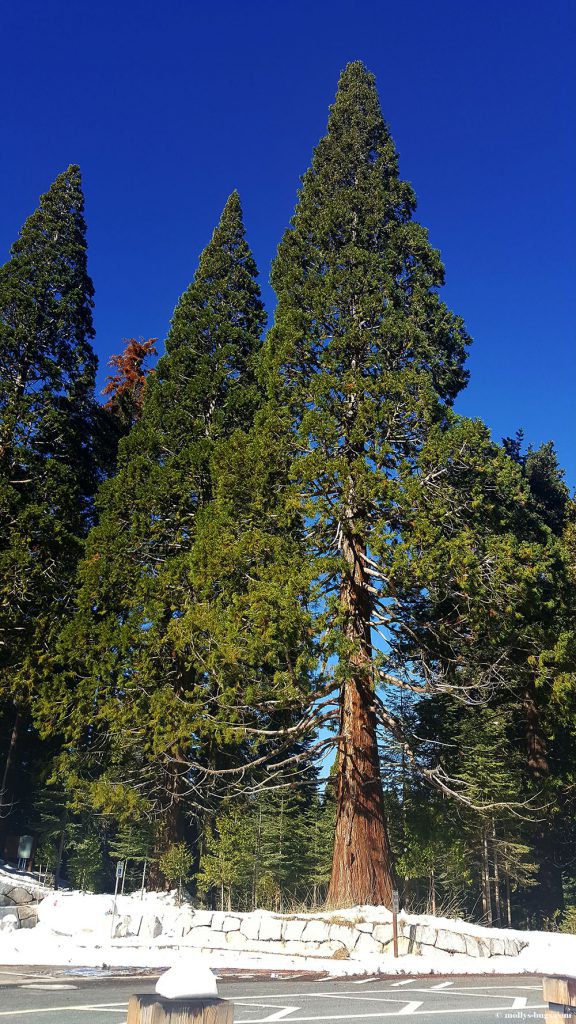

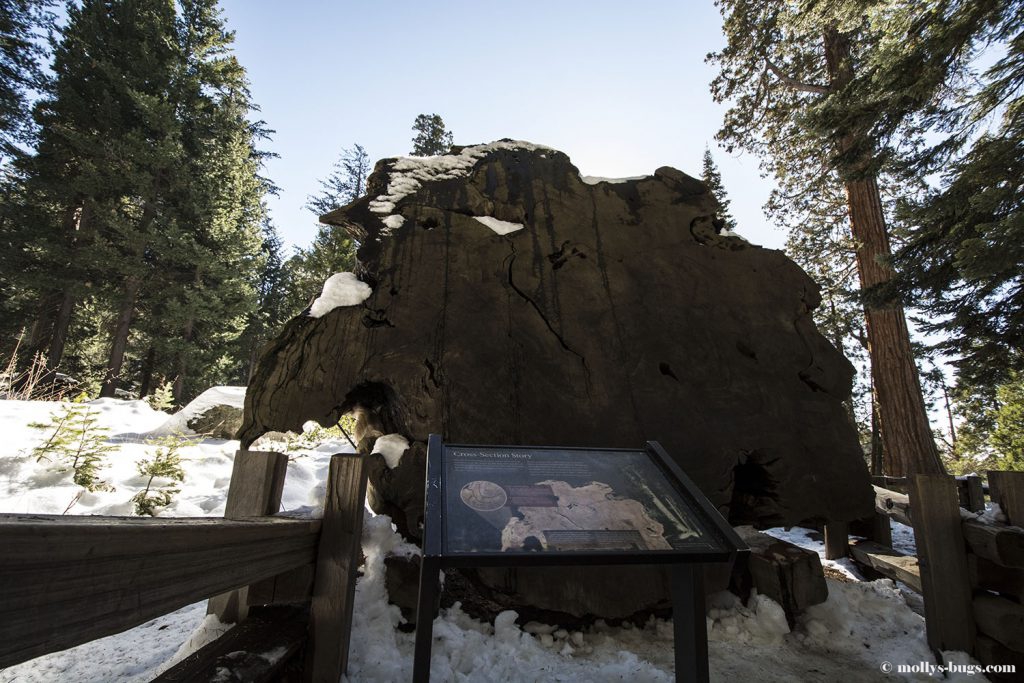
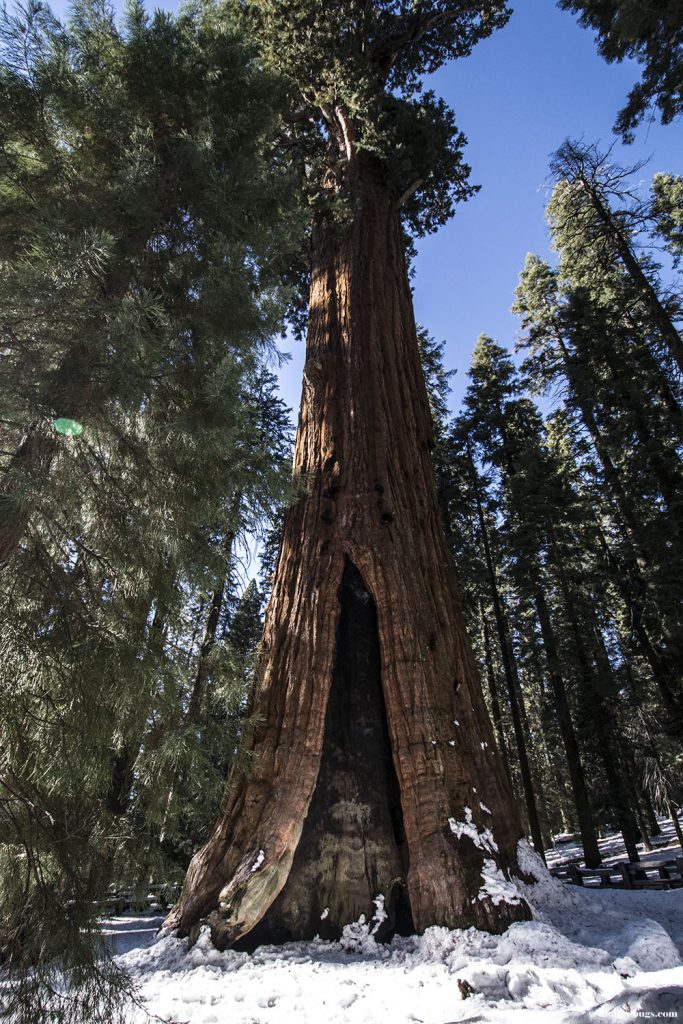
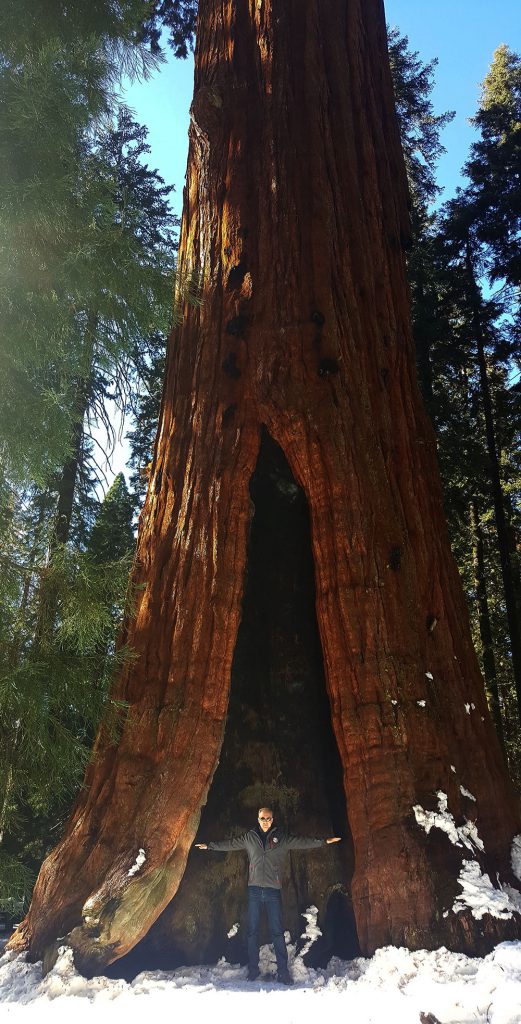
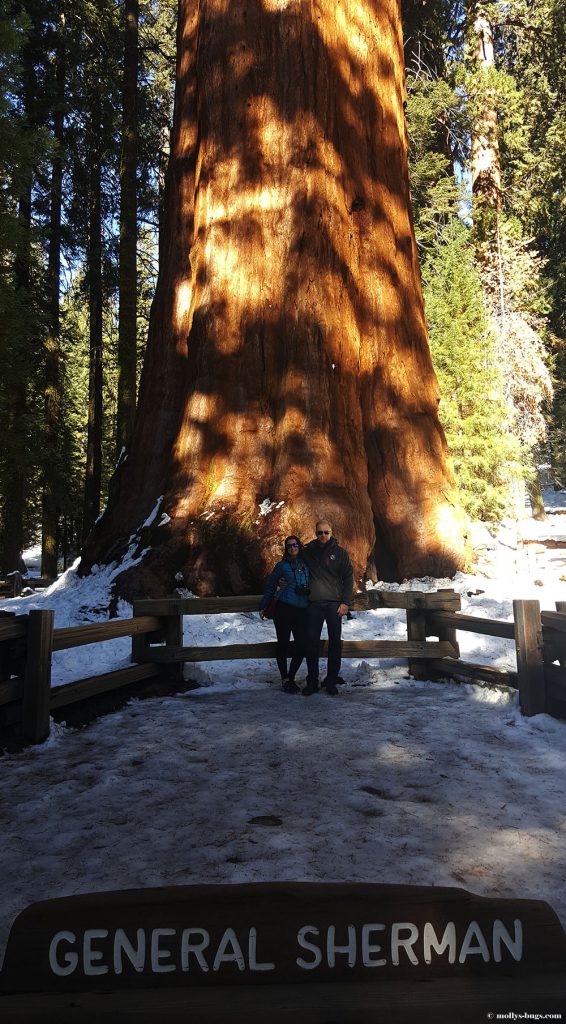
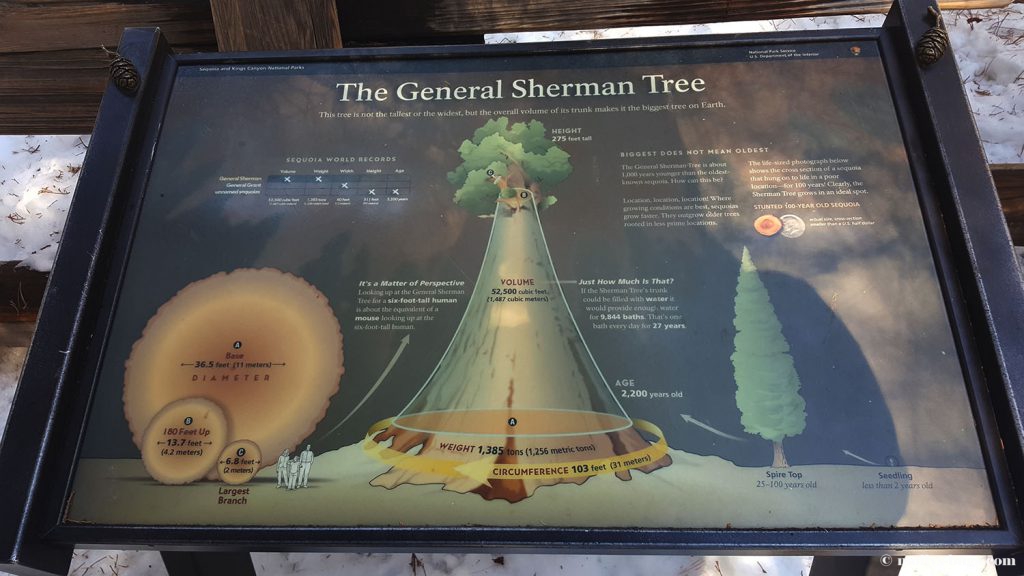
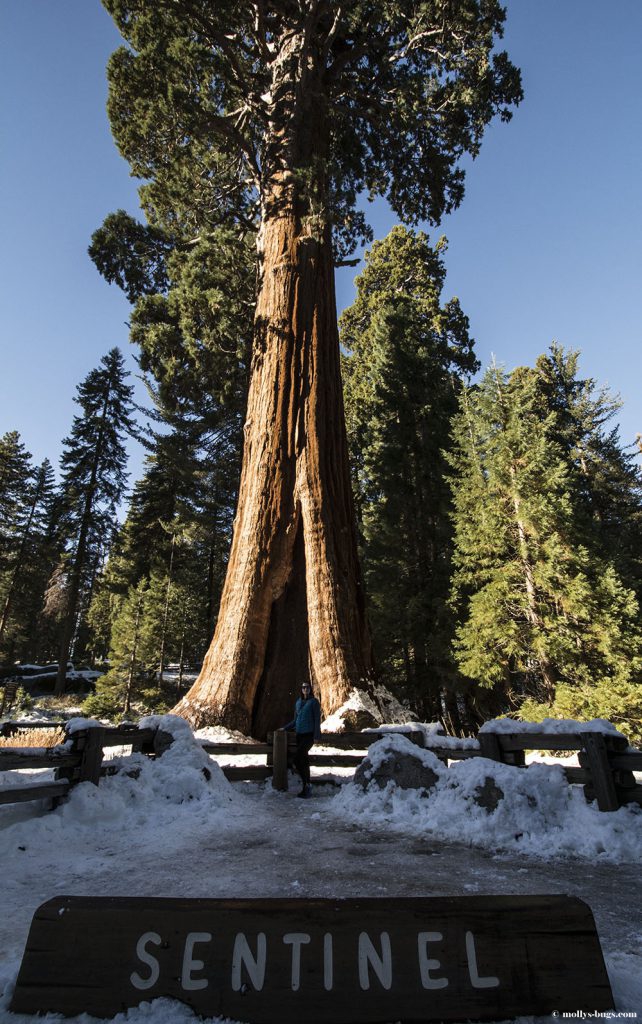
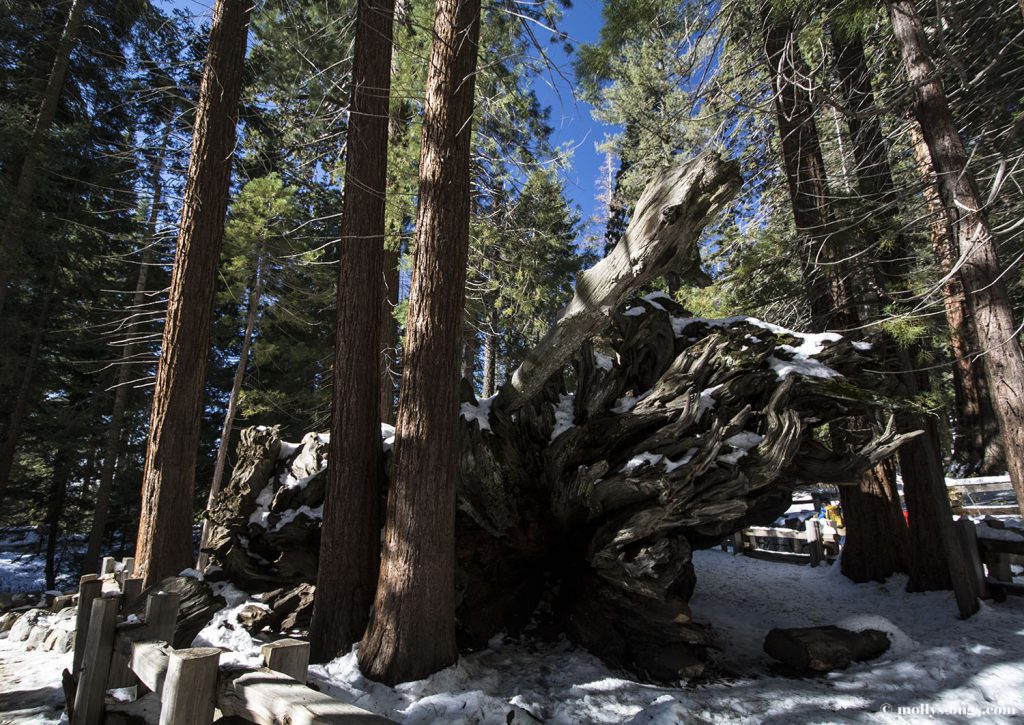
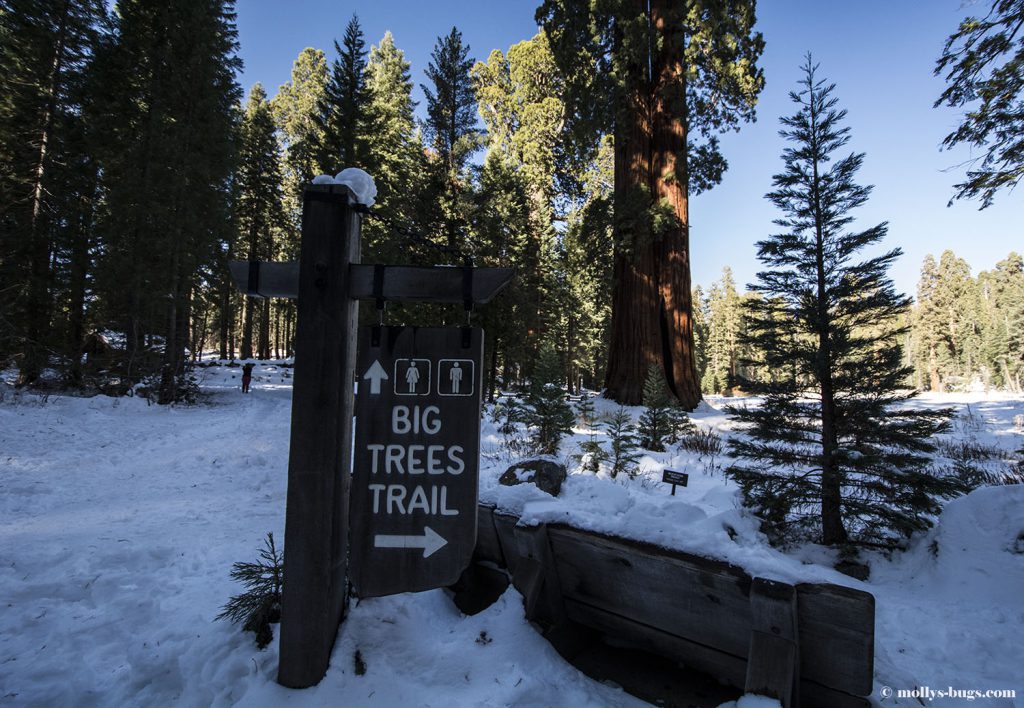
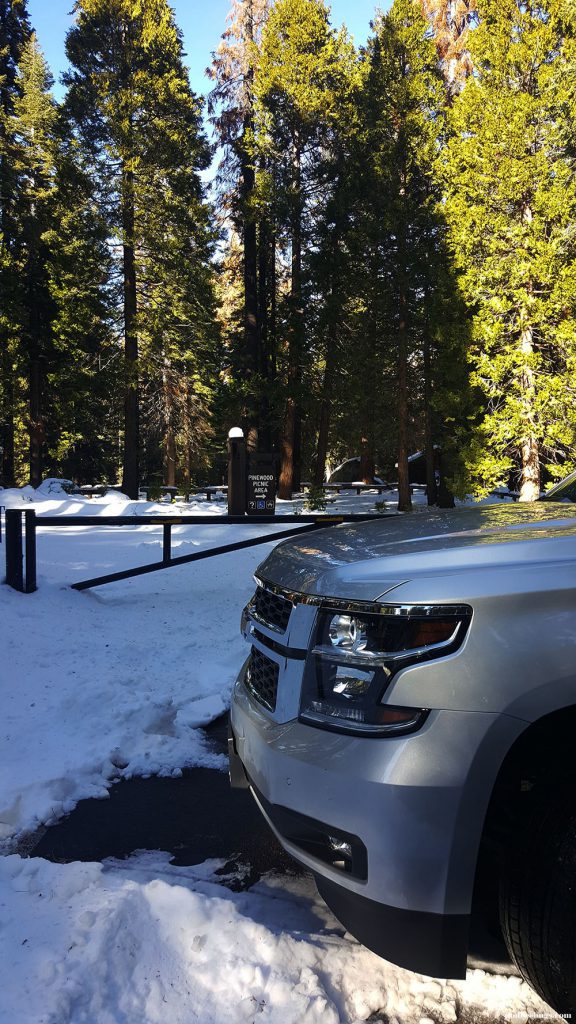
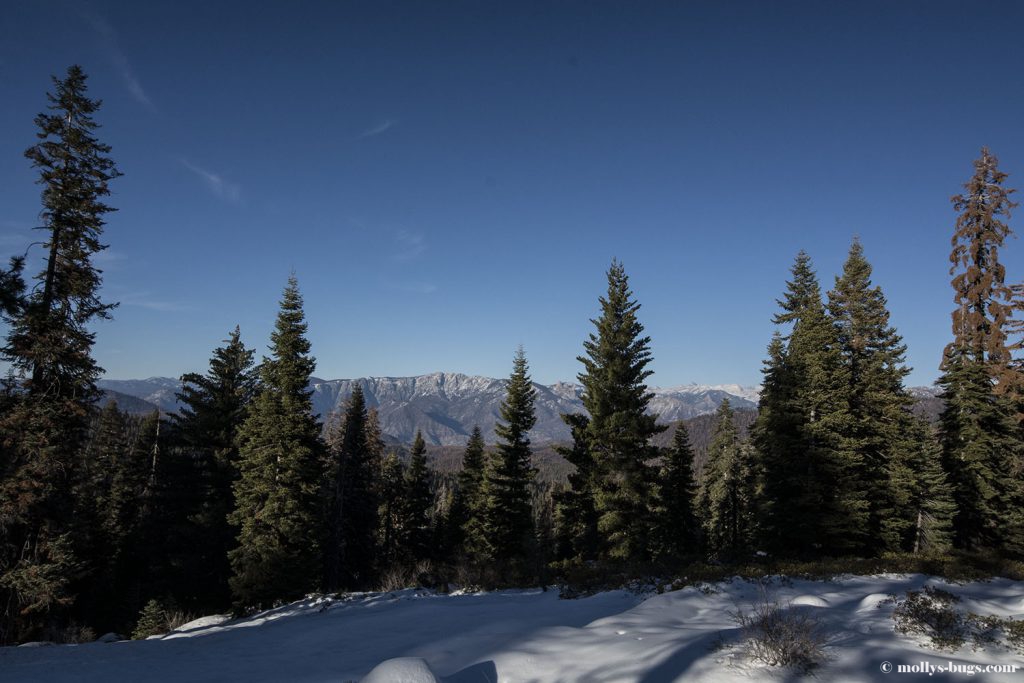
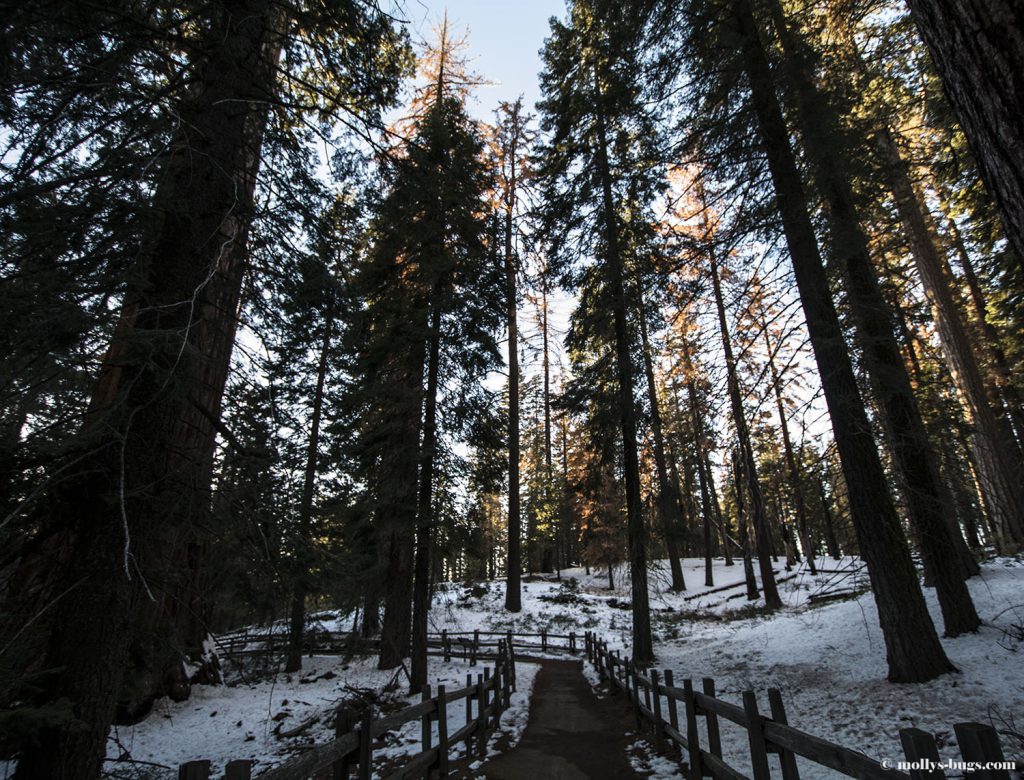
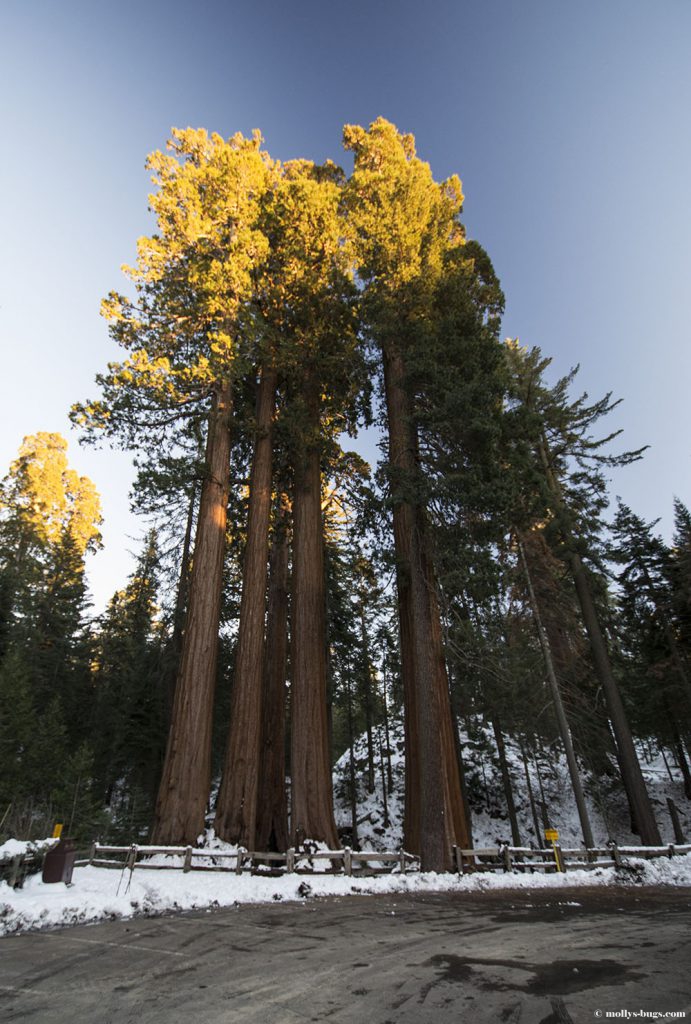
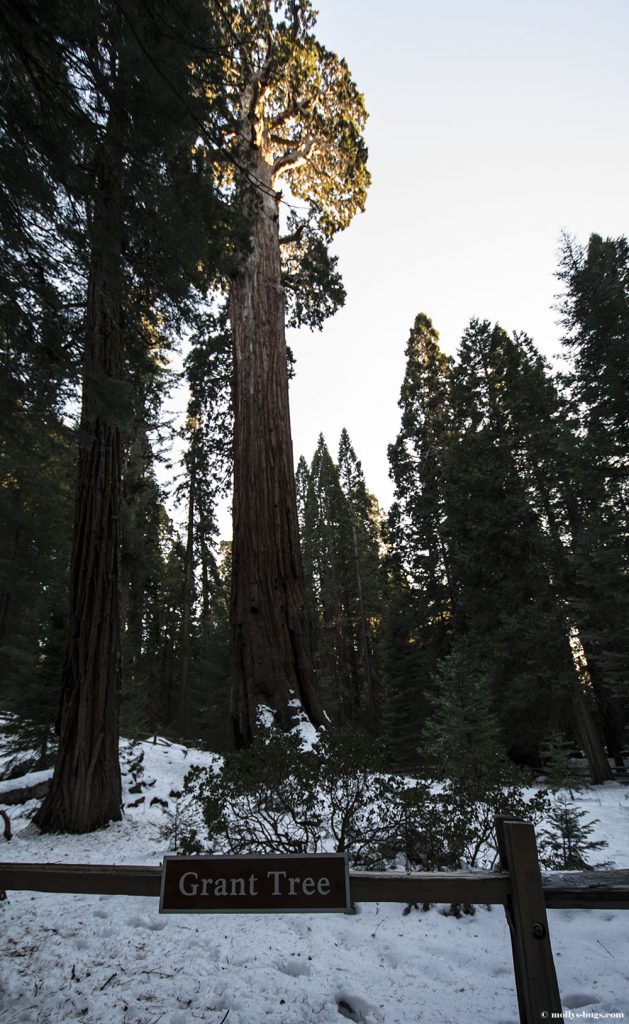
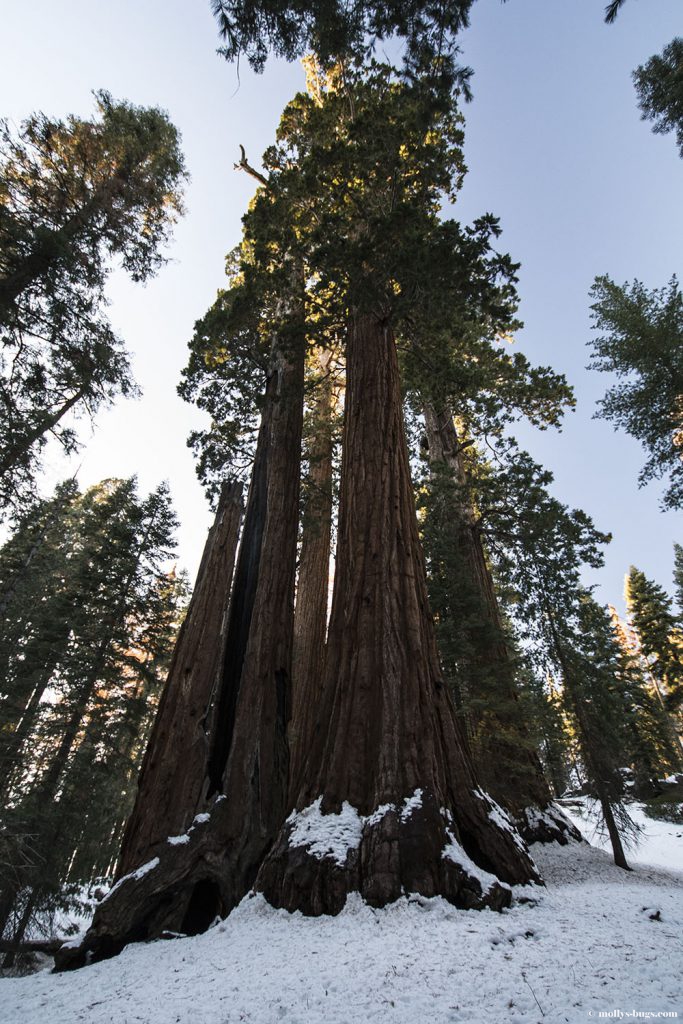
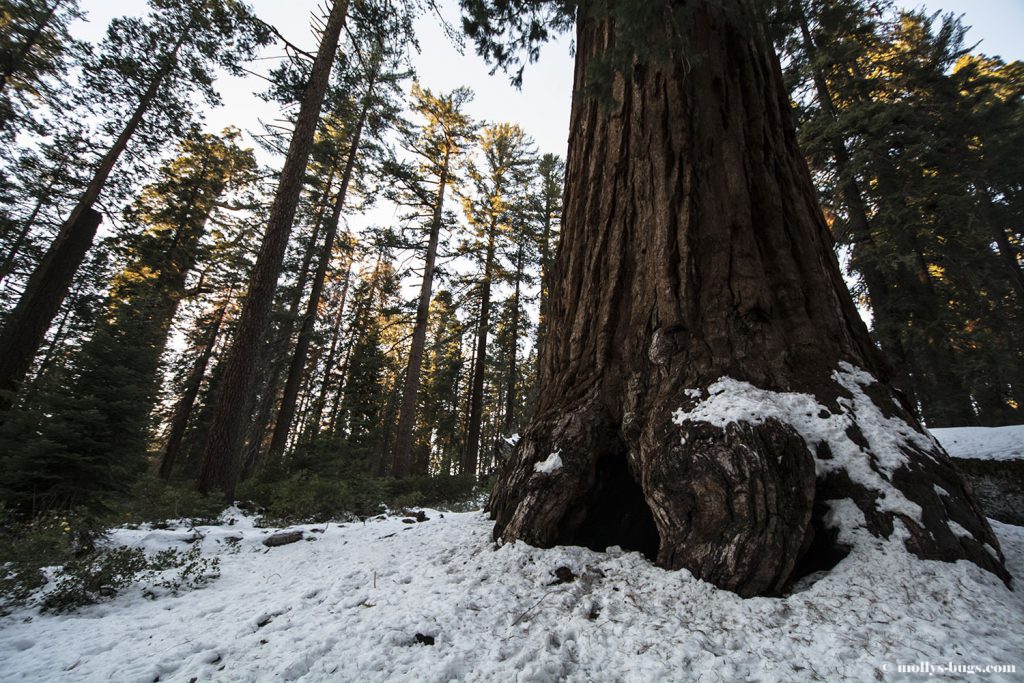
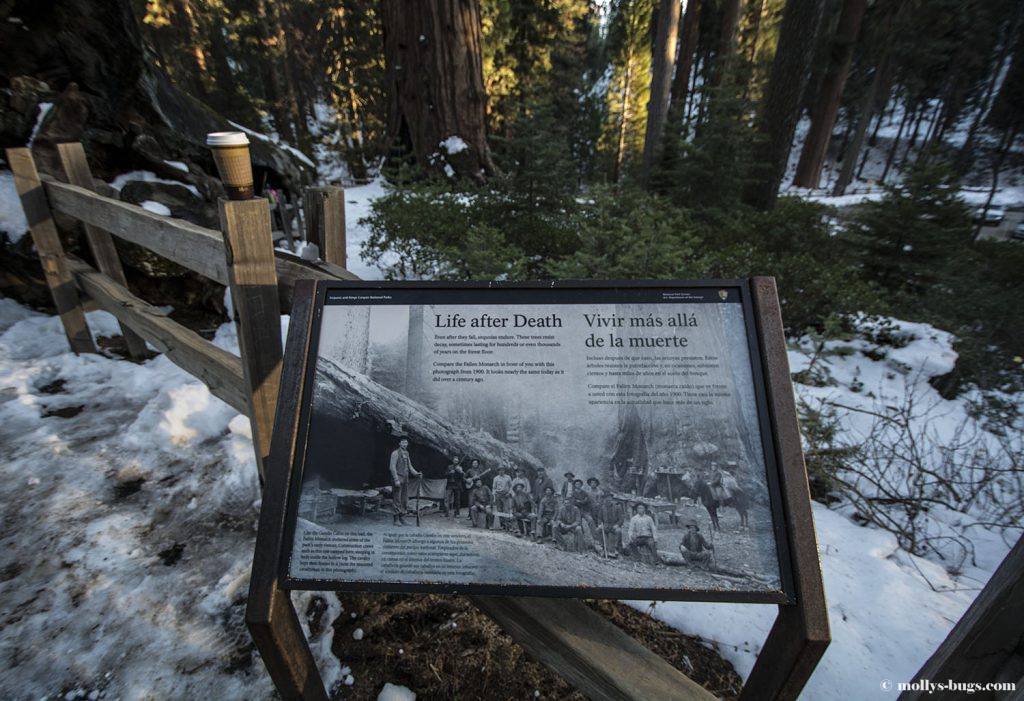
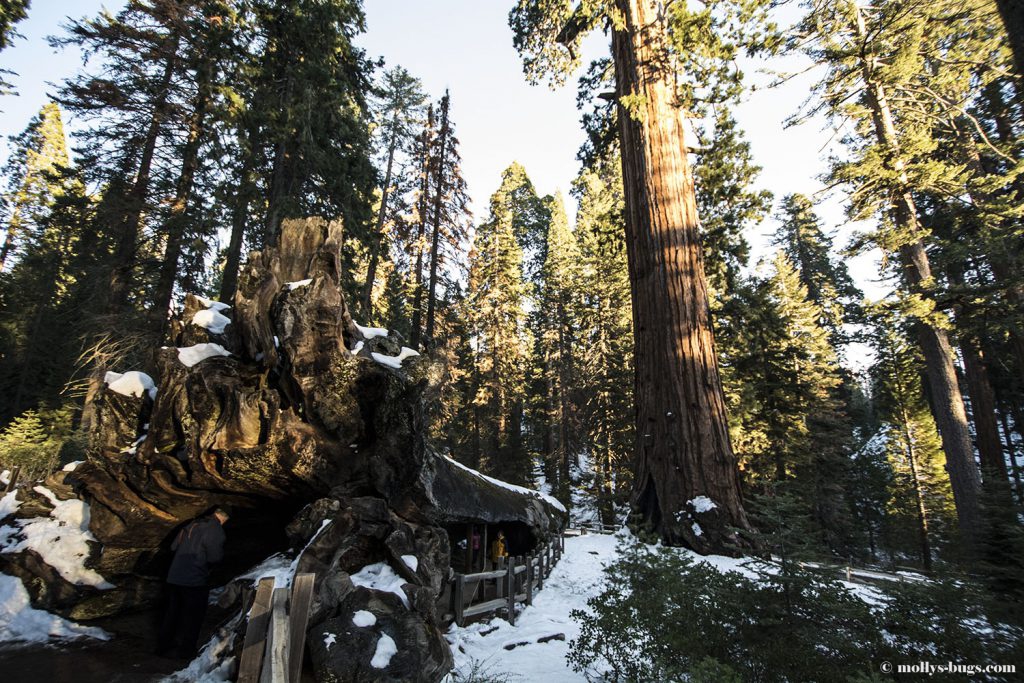
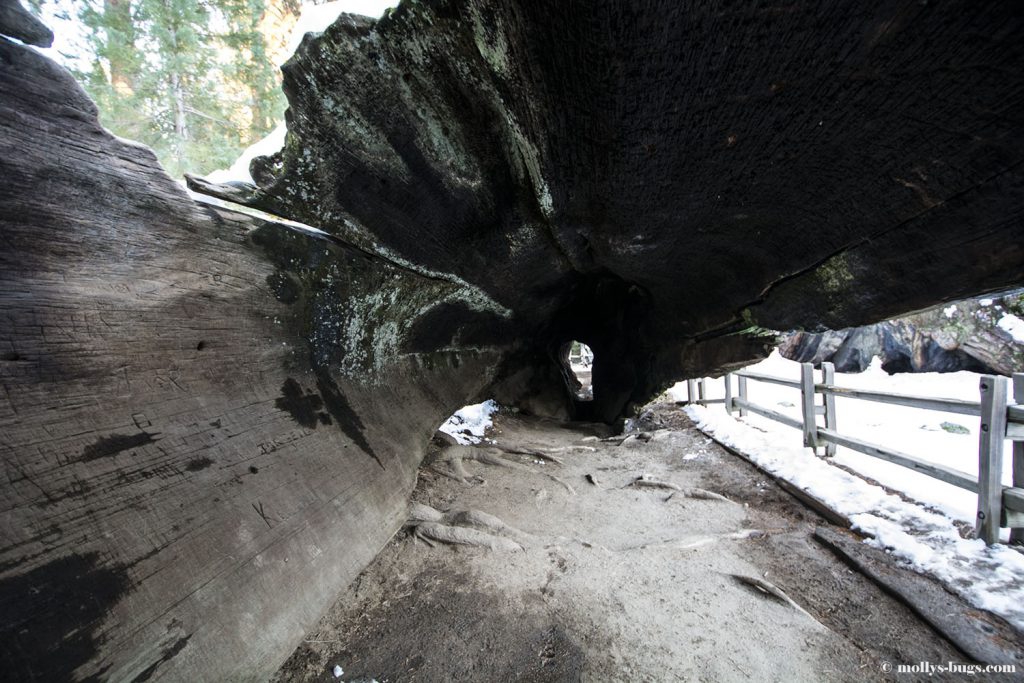
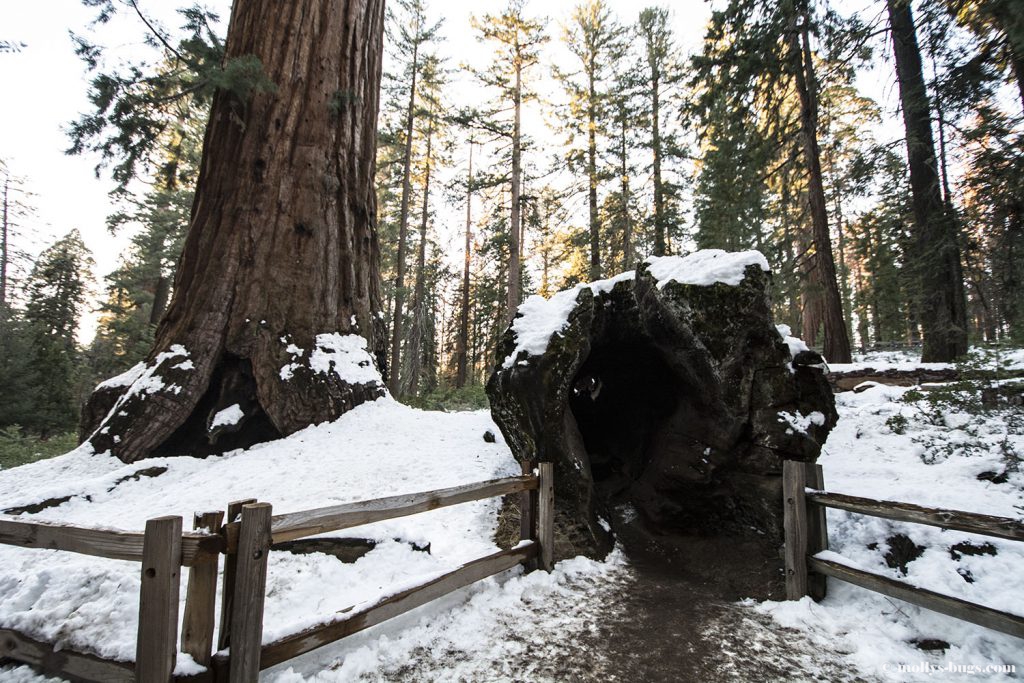
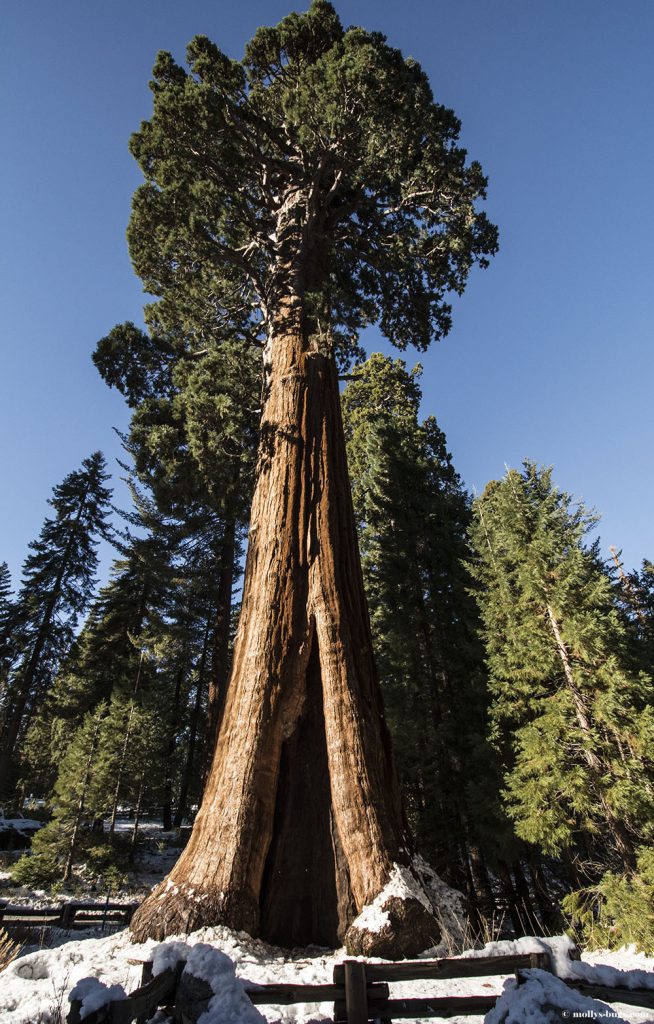
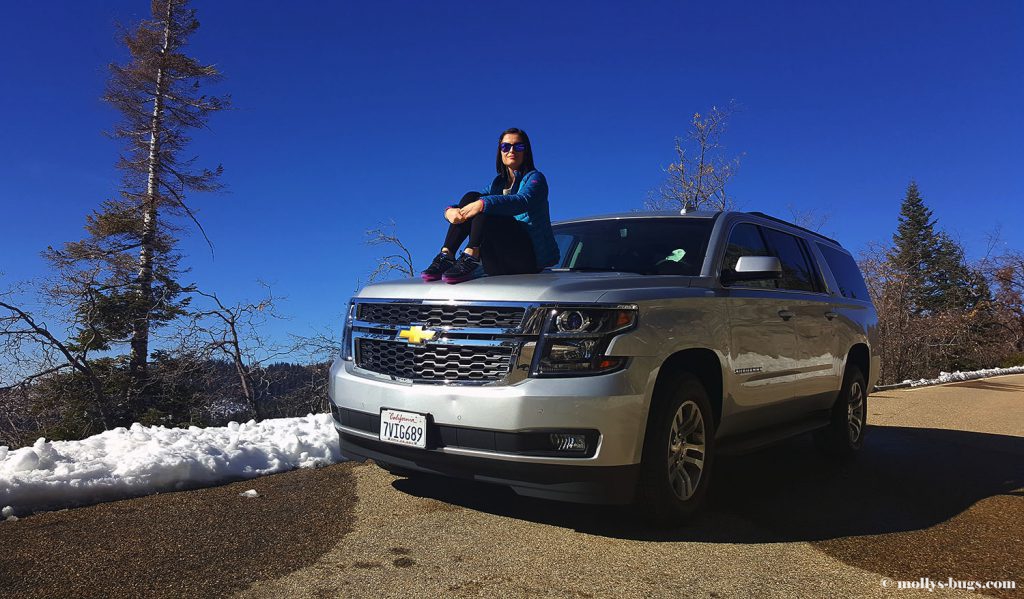






Leave a Reply